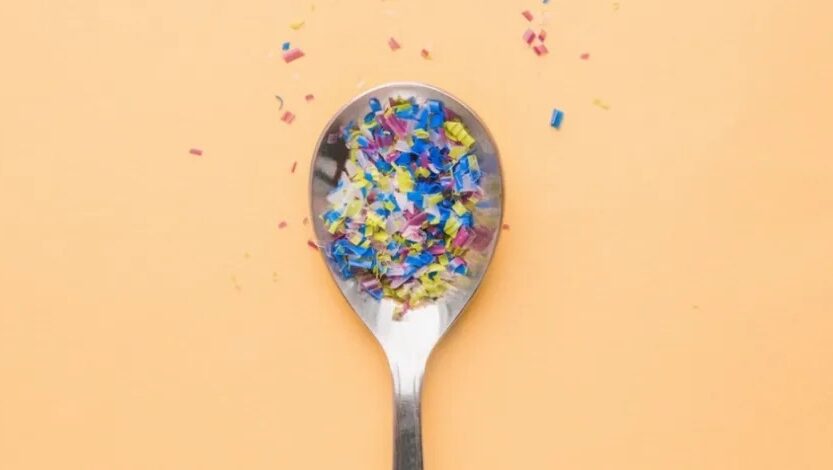In fact, plastic has never been decomposed, although many say that plastic can decompose to wait hundreds of years. In fact, plastic only changes shape to small particles and spreads to all layers of natural. Starting from, soil, water, air and entering the body of living things. Small particles of plastic are also called microplastic, generally less than 5 millimeters. Indonesia is the most microplastic eating country in the world. That way, Indonesia has become very vulnerable to disease.
Where is the microplastic coming from?
This modern age is a part of life. Almost all the items we use are made of plastic. Starting from clothing, cutlery, drinking utensils, sleeping utensils, cosmetics, tables, chairs, car tires, cigarette filters, plastic telenames, containers that can be heated microwaves, tea bags and so forth. So that the microplastic is very easy to enter the human body.

Also read: Organic Waste Causes of Global Warming
Reporting from CNBCIndonesia in 2023, research published by the Dow University of Health Sciences shows how hot water used to brew tea can release millions of microplastic from tea pockets. This study reveals that one cup of tea can contain up to 3.1 billion nanoplastic due to the tea bag. Tea bags containing dangerous substances, including fluorine compounds, arsenic, radium salt, aluminum, copper, lead, mercury, cadmium, barium, and nitrate. With the habit of Indonesian people drinking warm tea in the morning or drinking iced tea during the day, making Indonesia ranked first to eat microplastic.
Quoting from Brin (Indonesian Research and Innovation Brin) Plastic waste is the largest contributor in 5,300 million tons of waste that is dumped in a landfill or directly in our natural environment. Garbage from the mainland will go to the ocean. 12 million tons of plastic waste enter our ocean every year. In 2050 it is predicted that there will be more plastic than fish in the world of the world. So that every corner of the earth has been contaminated by plastic, even to the North Pole.
CNBCIndonesia added that plastic cutting boards that are often used can make humans exposed up to 79.4 million microplastic polypropylene or a type of plastic polymer every year. That is, the use of plastic cutting board has the potential to increase microplastic transfer to food. In addition, quoting from theguardian.com clothes that we wear every day are the biggest source of microplastic. Every washing clothes, especially acrylic-based clothes will release nearly 730,000 small synthetic particles every time washing, five times more than a mixture of polyester-katun fabric, and nearly 1.5 times more than polyester.
As time develops, everything becomes more instant and easy, so food containers or disposable drinks are very widely used in any part of the world. So that the distribution of microplastic is increasingly booming. Every time you go to buy a take away eating, for example, we will carry a plastic food, plastic food, plastic packaged drinks, plastic straws, even though the glass is paper, still coated with plastic. When the plastic is exposed to hot temperatures or frozen plastic will release microplastic, which will later enter the human body easily.
Also read: Terrible Facts of Plastic Waste
Microplastic danger
Microplastic and very small in size, not visible to the eye, easily scattered wherever, when in the air microplastic will fly freely and inhaled by humans and land animals. Quoting Tahita.id When in the ground, microplastic will settle in the soil affect the development of plant roots. Spots with higher microplastic levels in the upper layer of the soil can affect the availability of water for shallow rooted plants as well as the availability of nutrients, causing the soil infertile and barren.
ITB.AC.id added that in Indonesia, microplastic can be found in sea waters, river sediments, estuary, sediments in the coral reef environment, even in the stomach of fish. The number of fish samples in Indonesia containing microplastic is 5 times more than in America. The presence of microplastic in the stomach of the fish and becomes an entrance to the human body. Microplastic contains various additives that are harmful to health. Amanda revealed that plastic can absorb harmful chemicals that are dissolved in water and the smaller the size of plastic particles, it will be more efficient in accumulating toxins.
Within a week Indonesian people eat microplastic equivalent to ATM cards. The entry of microplastic into the human body causes various health problems. Alodokter mentions, microplatics attached to the skin causes skin irritation and itching. When it has entered the body it will interfere with the body’s metabolism, ranging from immunity, digestion, breathing, heart disease, stroke to cancer.
The solution to break the microplastic chain
Microplastic that has entered the body will be difficult to disappear, but by multiplying eating fiber will reduce microplastic in the body that comes out through feces. To avoid being exposed to microplastic, you should use daily equipment with environmentally friendly goods, such as replacing disposable plastic bags, with shopping cloth bags. Replace plastic tender with wood, a plastic container microwave with stainles stock boxes, reduce shopping take away, change the habit of drinking bags with the brewing, avoid drinking disposable plastic packaging and all other plastic items.
Also read: Joint Movement to Overcome Garbage in Pesantren
If it has reduced but there is still plastic waste, then sort the garbage according to the type and deposit it to the nearest garbage bank. Do not burn plastic waste, let alone throw it carelessly and sneak it in the ground. Let’s wisely use plastic starting from yourself.
Writer: Aulia Rachmatul Umma
Editor: Rara Zaryry
Game Center
Game News
Review Film
Rumus Matematika
Anime Batch
Berita Terkini
Berita Terkini
Berita Terkini
Berita Terkini
review anime
